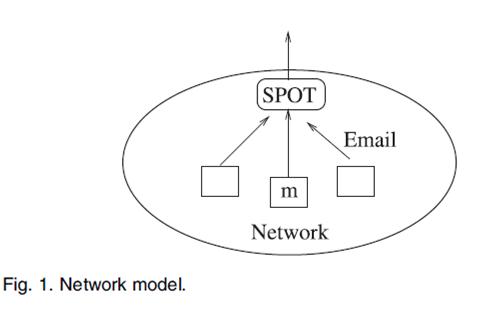Base Paper Title:
Endpoint-Based Call Admission Control
and Resource Management for VoWLAN
(or)
Our proposed own title:
Endpoint-Based Call Admission Control with Resource Management through Congestion Notification and Probing Mechanisms
See the Output of the project here
See the Output of the project here
Base Paper ABSTRACT:
This paper examines two specific aspects of resource management in Wireless Local Area Networks (WLANs)—Call Admission Control (CAC) and handling of Link Adaptation (LA) events. A self-consistent system to manage these for Voice over Internet Protocol (VoIP) over an IEEE 802.11 WLAN is presented. The proposed CAC scheme is based on the Endpoint Admission Control (EAC) paradigm, where the endpoints probe the network to determine if the call can be supported with acceptable Quality of Service (QoS). The proposed scheme was evaluated on an experimental testbed and test results show that correct admission decisions were made under various network configurations. The scheme also determines if LA has resulted in the system becoming congested and, if so, the voice codec of the handset which has undergone LA is adapted so as to restore the system to its earlier state, thereby alleviating the congestion. The proposed scheme was evaluated on the experimental testbed and test results show that the codec adaptation scheme was very effective at overcoming the effects of LA for VoIP over WLAN.
Our Proposed Abstract:
In this project we proposed a new approach for detecting and controlling congestion that arises in network as a result of unchecked traffic across it. One such congestion control mechanism is admission control. Admission control checks the status of the network before a user is granted access to it to see if the network is congested or not. End point admission control ensures that the end user is given the ability to choose whether to connect to the network or not based on the current status of the destination network. Therefore, this mechanism is essentially a congestion detection mechanism. The decision to join the network is taken by the user, based on the probing of the network using special packets called probe packets. Probe packets are packets generated for the sole purpose of identifying the status of the destination network or in other the level of congestion in the network. The router determines the status of the network by the continuous polling mechanism. Depending on the level of congestion, routers mark the probe packets thereby granting or refusing the end user at the source network to connect to the destination network.
EXISTING SYSTEM
- CURRENTLY, the VoWLAN (VoIP over WLAN ) offers a simple best-effort service where users are expected to adapt their transmission rates in response to congestion signals from the network.
- Clearly, this is not sufficient to support real-time applications that may require packet loss and delay guarantees, along with a fixed or minimum bandwidth requirement.
- However, to provide strict guarantees, some form of admission control is required. Alternatively, the admission of a call to the network could be based on some measurement of the network state by the routers, and some form of communication between the source and the routers to determine if the available resources are sufficient to provide the expected quality of service (QoS).
PROPOSED SYSTEM
- In this paper, we study mechanisms for distributed admission control of sources that require a fixed bandwidth from the network. Commonly referred to as Endpoint Admission Control, these schemes rely on the availability of congestion information provided by the routers through dropping or marking.
- Proposed system has a new approach for detecting and controlling congestion that arises in network as a result of unchecked traffic across it.
- The router determines the status of the network by the continuous polling mechanism.
- Depending on the level of congestion, routers mark the probe packets thereby granting or refusing the end user at the source network to connect to the destination network.
HARDWARE SPECIFICATION
Processor Type : Pentium -IV
Speed : 2.4 GHZ
Ram : 128 MB RAM
Hard disk : 20 GB HD
SOFTWARE SPECIFICATION
Operating system : Windows - XP
Tools : OMNET ++
ARCHITECTURE

TECHNIQUE USED:
Probing - This probing arrangement offers a number of benefits over end-to-end probing:
1. Probing of the end-to-end path may pose problems for the ICMP packets which may be blocked by firewalls beyond the internal network or dropped by external routers.
2. This approach focuses on detecting congestion in the WLAN used by each party to the call.
3. Unless the Ethernet backbone has a serious loading issue beyond its design profile, probing of the wireless link separately should be enough to guarantee the end-to-end quality of the call.
4. In an SIP-based system, the caller usually does not know the IP address of the callee, so end-to-end probing is only possible after the SIP address is resolved at the SIP registrar. Waiting for the IP address would add an undesirable delay to the call setup time.
Marking Strategy – Marking must be done in a meaningful manner and must be tightly related to the current ability of the network to satisfy the QoS requirement by the router.
Decision Strategy – The source has to make the best use of the information represented by marked probe packets.
REFERENCE:
Philip McGovern, Philip Perry, Sean Murphy and Liam Murphy, “Endpoint-Based Call Admission Control and Resource Management for VoWLAN”, IEEE Transactions on Mobile Computing, Vol.10, No.5, May 2011.



